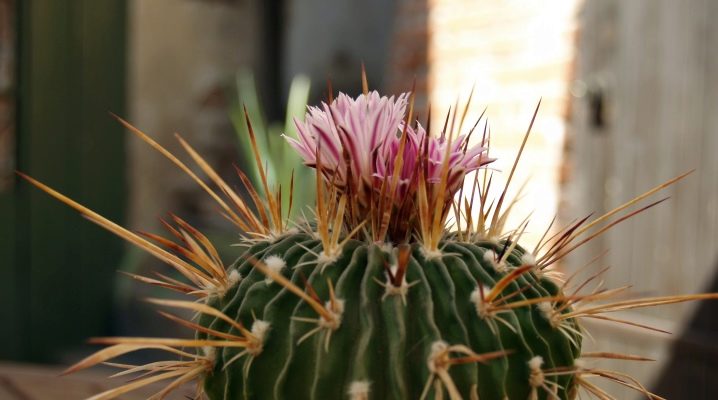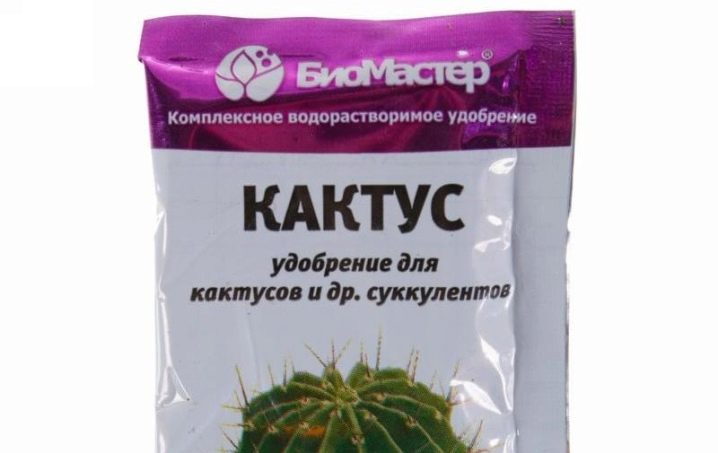Choosing fertilizers for cacti

Cacti are considered the most capricious and drought-resistant representatives of the ornamental flora. But endurance does not negate the need to feed succulents. Carrying out the procedure at home, you need to know the compositions and rules for using fertilizers for cacti.
Without proper nutrition, the cactus will not dry out, but it will not delight with its healthy appearance, the juiciness of flowering, the attractiveness of its owners. Since cacti are sensitive to the change of seasons, it is imperative to study the schedule of optimal feeding for succulents. This approach will make the houseplant strong, sturdy, disease-resistant, and will stimulate growth and flowering.
The most important micro and macro elements
So, almost all cacti are succulents. This type of plant is very resistant to drought, hardy, not capricious, undemanding. Despite this fact, plant care is not canceled. These procedures are simple and do not need to be performed very often. Cactus care must be correct, nutrition, lighting, moisture and temperature must be observed. Nutrition means fertilizing with fertilizers.
Fertilizers are necessary for the active growth of home flora, strengthening tissues, provoking flowering, and increasing disease resistance. Many inhabitants believe that water, soil and carbon dioxide are enough for cacti to thrive and not get sick. However, this is only enough to keep the plant alive. All other components necessary for health are obtained from cacti feed mixtures. These are micro and macro elements that are included in almost all compositions of fertilizers for cacti.
Living in an apartment deprives succulents of their usual natural conditions, in which there is a lot of heat and sun. Therefore, an exotic representative of the flora needs additional stimulation with nutrient mixtures. It is very important to maintain the dosage and not overfeed the succulents. Otherwise, the pet may simply crack, because its internal tissues will grow in inadequate proportions.

Elements that must be included in the nutritional mixture: nitrogen, phosphorus, potassium and calcium.
Nitrogen
All representatives of the flora need this substance in large quantities, but this does not apply to cacti. They need nitrogen in an extremely metered manner, because they grow more slowly than other plants. Succulents transplanted into soil oversaturated with nitrogen become strong, activity increases, but elasticity disappears, being replaced by watery tissues. Inflorescences do not multiply, the surface of the cactus cracks.
The look of the plant is unhealthy, it dries up, its wounds rot, which can lead to death. Due to this organic fertilizers are not used at home, with the exception of rare fast-growing varieties.
In small quantities, nitrogen helps to strengthen the cactus, relieves of many diseases.
Potassium
The situation is different with this substance: it is extremely important for cacti, everything that is connected with growth, the formation of strong elastic skin depends on it. This is extremely important for keeping the pet from temperature extremes, drafts, direct rays of the hot sun. The vegetation of succulents is largely directly dependent on a sufficient amount of potassium.With a deficiency, there are no obvious, conspicuous signs. Inflorescences may not form, the plant cover turns pale, a brownish tint appears.
Potassium deficiency often occurs due to the use of calcareous soil, since calcium is increased in such soil, but magnesium-potassium cations enter the plant in a reduced concentration. It is very important to keep the balance of the components so that only one part of the potassium is combined with the two parts of lime. Florists do not recommend starting immediately with potassium fertilization if you notice the corresponding signs, since this symptomatology is very similar to a violation of lighting and a high temperature. Excess potassium affects the flower destructively due to root decay.

Phosphorus
This element affects the qualitative growth of the root system, the formation of buds, on which, in turn, full flowering, ripening of fruits, and an increase in the quality of the seed depend. Succulents thrive best thanks to their mineral-type formulations, which are made up of equal parts potassium, nitrogen and slightly more phosphorus.
If the cactus is not in bloom, growth is slower than expected. It is possible that the flower lacks phosphorus.
Calcium
It is a very important component for the development of succulent plants, because it is thanks to him that the cactus is provided with the rigidity of the structure. If you pick up an acidic type of soil, there may be a lack of this element, as a result - the plant stops growing, the roots do not develop, the thorns lose their rigidity, the stem and branches break. In this case, the flower can, for example, fall from the windowsill without any consequences.
In the case of the correct formation of the composition of fertilizers, the cactus becomes strong, developed and strong.

Lack of nutrition
If the indoor cactus is deficient in any nutrient, this can be seen by the corresponding signs:
- growth has slowed down or stalled - in this case, most likely, several elements are missing at once: nitrogen, boron, chlorine, iodine, copper, manganese;
- the root system does not develop - fertilizing with calcium is necessary;
- chlorosis - a sign of potassium deficiency;
- abscission and drying of inflorescences - means that the plant lacks iron;
- cactus brightens and does not bloom - you need more magnesium;
- too intense kidding - signals a lack of zinc.

Mixes for feeding
The best thing that a non-professional florist can do is to use ready-made mixtures in which organic and mineral components are correctly balanced. As a rule, these are special fluids that are introduced during watering. Experts recommend paying attention to the following edging:
- "Flower Paradise", "Agrecol" - multi-component liquid formulations;
- Agricola, Master - concentrated dry mixes;
- Bona forte - a liquid composition, which, in addition to the main trace elements, contains succinic acid, magnesium, iron and boron;
- Pokon - multicomponent in composition, available in different variations: granules, tablets, concentrate, spray.
If all the necessary components are available, it will not be difficult to prepare the composition. For this:
- one gram of iron and superphosphate, two grams of calcium, magnesium and 4 grams of potassium are diluted in five liters of water;
- in one liter of water, 80 grams of ammonium sulfate, 30 grams of nitrate, 40 grams of sodium are combined.
These mixtures and liquids have a positive effect on the condition of the flower and soil, increasing the conductivity of moisture and air.
It is worth paying attention to fertilizing, flavored with humus. So, it is good to add bird droppings by diluting one gram of it in a liter of water. It should be borne in mind that variegated cacti, after organic feeding, change the color scheme to green.




In the case when the cactus does not bloom, this process can be provoked by increasing the amount of potassium and phosphorus in fertilizers.
How to fertilize correctly?
From the very beginning of March to September inclusive, active vegetation continues, and therefore it is necessary to feed the plant once every two weeks, but in a weakened concentration. The winter interval from October to the end of February remains without feeding. Growth and flowering often do not coincide in periods, but only the watering schedule can depend on this. Fertilizers are applied only according to the above schedule.
In a cloudy summer period, feeding should be reduced, since succulents hardly grow and do not need additional nutrition. In case of transplantation, cacti are fed only three weeks after placing in the ground.

Florist recommendations
There are a number of rules for feeding cacti, which experts advise to observe:
- before making fertilizers, it is necessary to defend the water, having previously filtered it, if it is rather hard (this type of liquid negatively affects the growth of home flora);
- before fertilizing cacti, be sure to moisten the soil with purified and settled water;
- exclude the ingress of the composition on the trunk of the cactus;
- if a pet is infected with a fungus, has another disease or is resistant to insects, it is better to postpone feeding until it recovers;
- after purchasing a flower or transplanting it cannot be fed - it is necessary to allow it to adapt to new conditions;
- before feeding, create comfortable temperature conditions: the plant should not be in direct sunlight, in drafts and in the cold.
























































The comment was sent successfully.